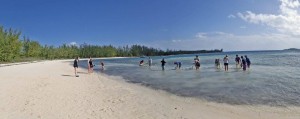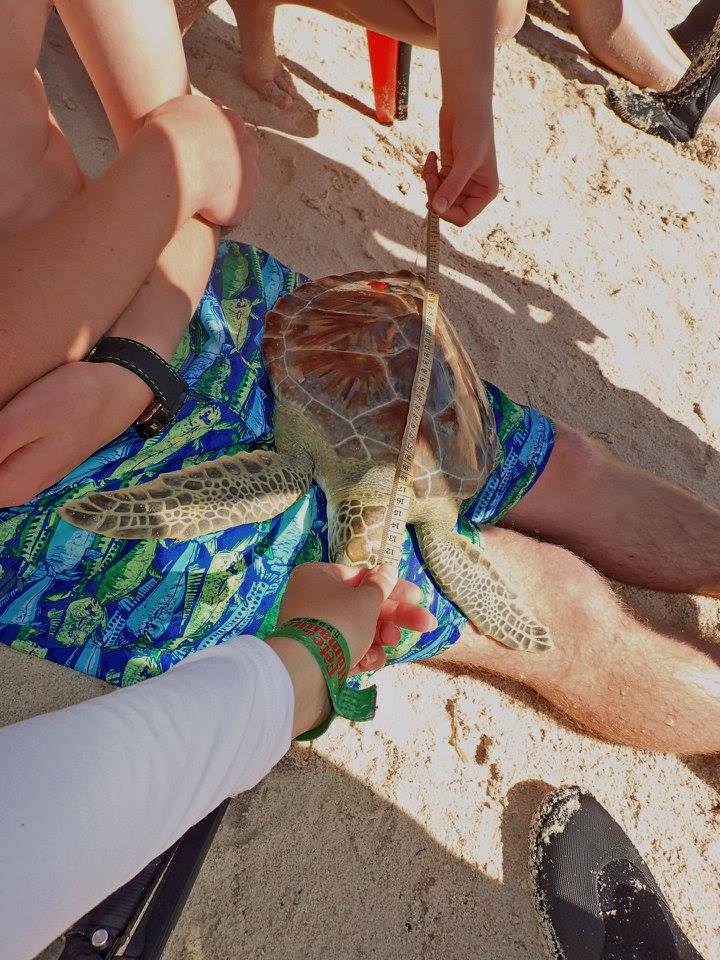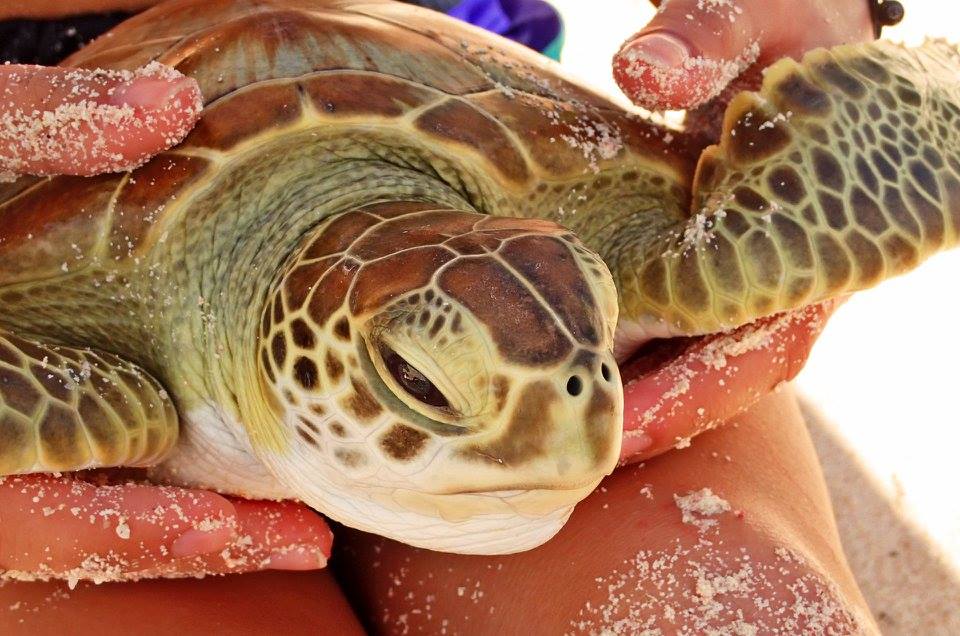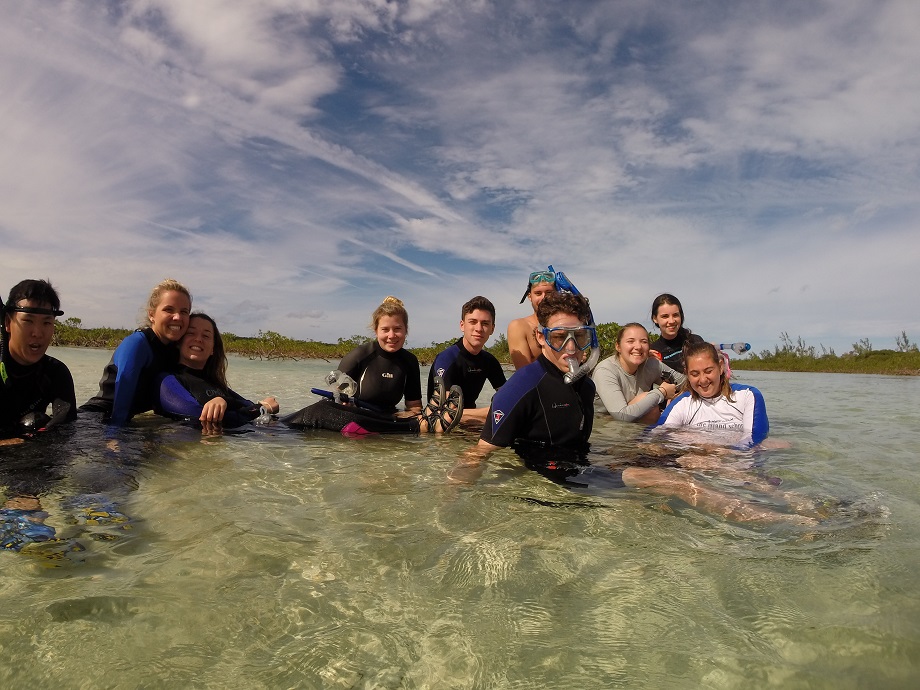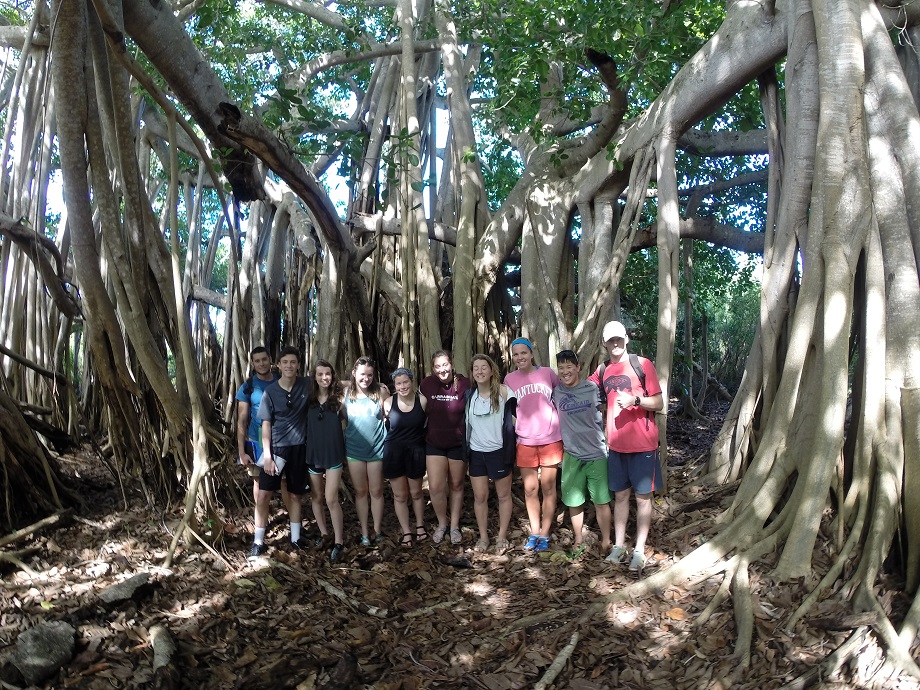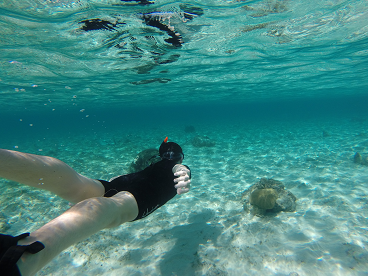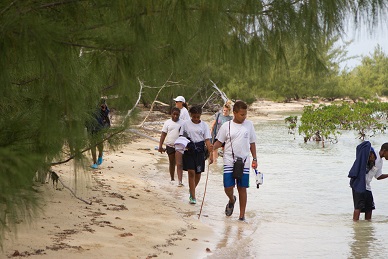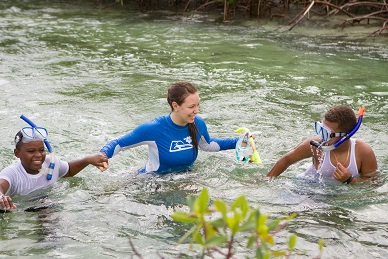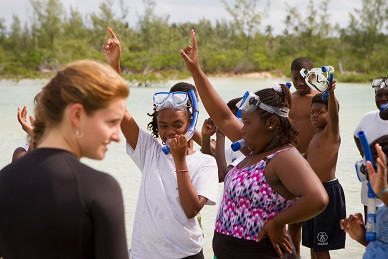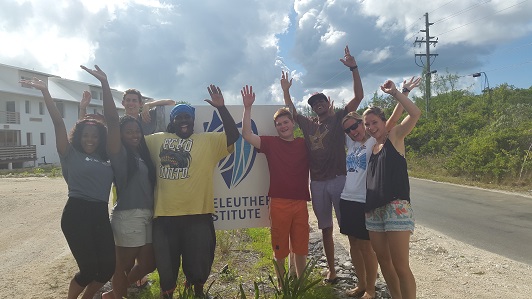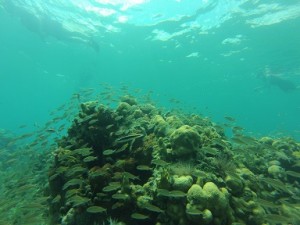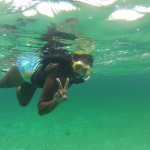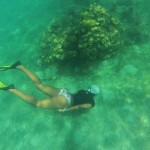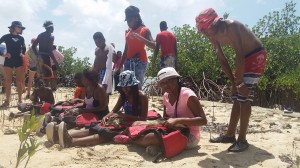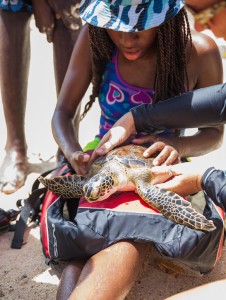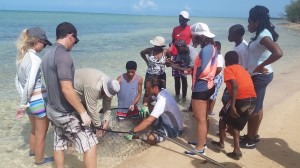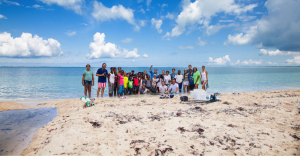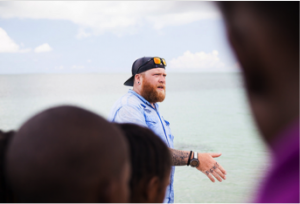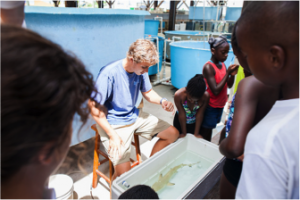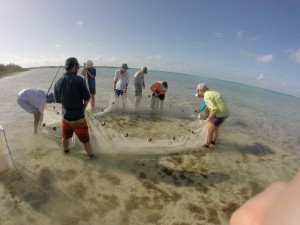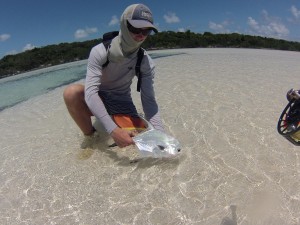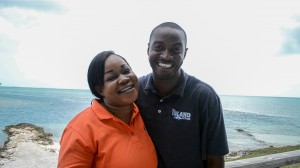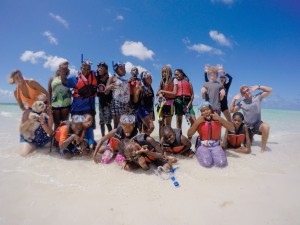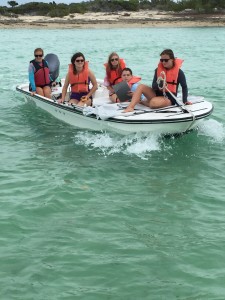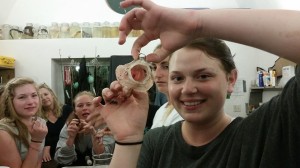Green sea turtles (Chelonia mydas) are one of only seven remaining sea turtle species. These reptiles were classified as an endangered species on the IUCN Red list, following the abrupt decline of populations due to overexploitation and habitat loss. Although the green sea turtle is protected in Bahamian waters, it is still of great importance to investigate the factors that influence where juveniles choose to forage, as this life cycle stage is crucial to the species’ ability to grow and thrive. Seagrass beds play a critical role within this life cycle stage acting as a key food source for the green sea turtle, and therefore vital for development. This summer, at the Cape Eleuthera Institute, Trinity College Dublin student Anna Whitaker, Oxford University student Alison Maughan and Royal Holloway University of London student Kate Rowley, aim to carry out research which could contribute to the improvement of future conservation efforts of the green sea turtle.
A total number of 9 mangrove creeks were studied in this experiment. At each creek they visited, quadrats were placed and used for the investigation of seagrass structure, where percentage cover, species richness, and leaf canopy height data were collected. As well as this, environmental factors of the area, such as water depth, were studied. Samples of seagrass were also taken using a core.
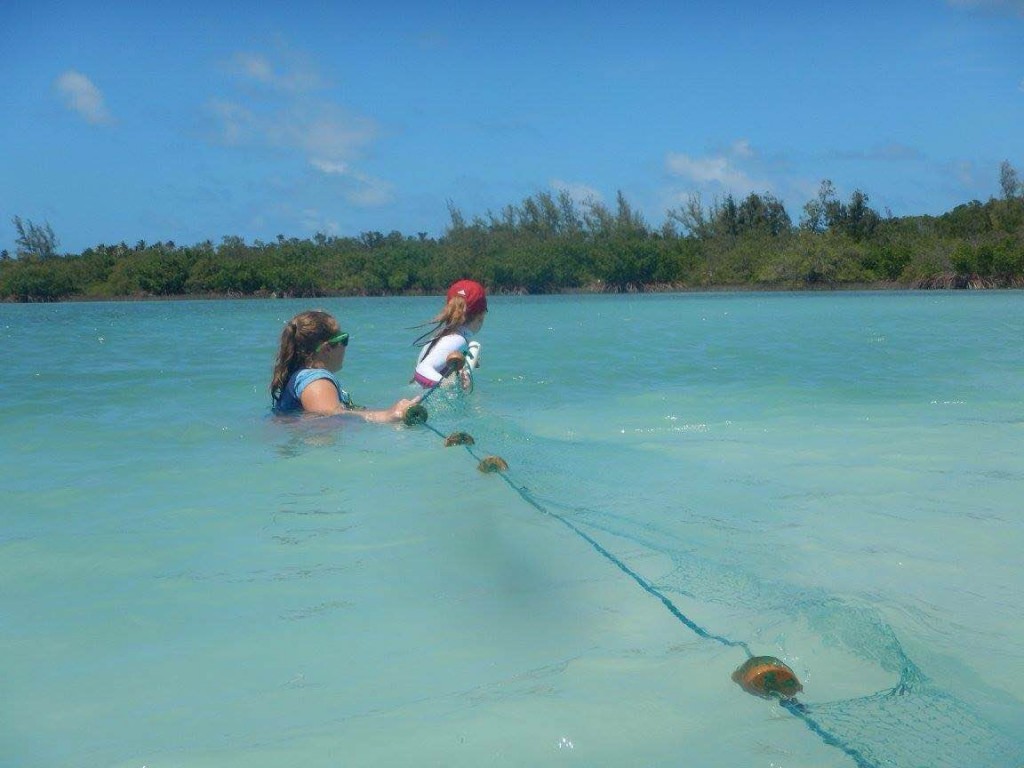
Laboratory analysis of the seagrass samples was used to identify the determinants of sea grass density. This analysis included calculating the number of leaves and shoots in each core taken. After which, the biomass of the samples were calculated by dividing out the core samples into above and below-ground matter. These seagrass samples were heated, and therefore dry weights of above and below ground seagrass matter could be taken.
In order to collect data regarding the abundance of turtles, methods including turtle seining, chasing and abundance surveys were carried out within the creeks where seagrass data had previously been collected. These methods sought to demonstrate correlations between characteristics of the seagrass and the abundance of turtles.
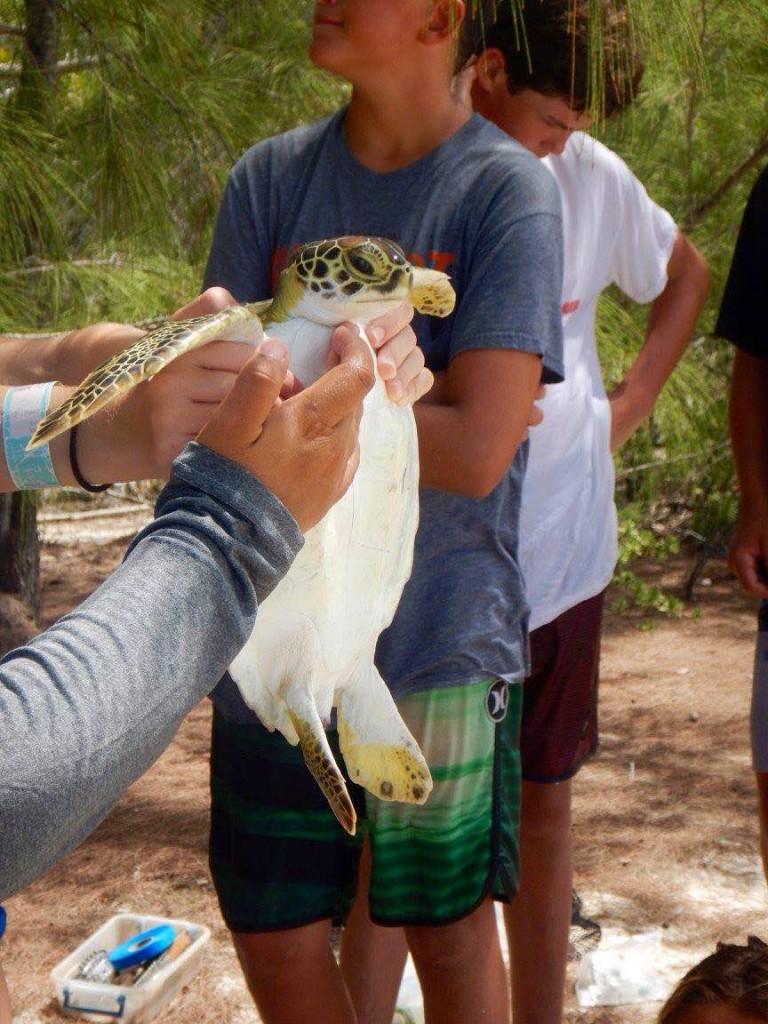
Within each creek, a number of different habitat types were studied, including the mouth, silty mangroves, warm shallow waters, and seagrass meadows.
In addition, this project has collaborated with numerous programs, such as Earthwatch, allowing this research to connect with educational outreach and inspire young marine biology enthusiasts.

The data collected will identify the fine-scale patterns of site selection and resource use of foraging grounds. This will contribute to a better and more in depth understanding of green sea turtle habitat usage. The research objectives of this study will form the basis for Alison, Kate and Anna’s undergraduate dissertation projects. We thank them for their help and wish them all the best with their studies!
